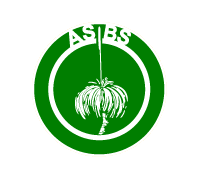
President's Report
ASBS Newsletter 100, September 1999
The President's Report in the first ASBS newsletter, just over 25 years ago, concerned the mundane but momentous matter of establishing the Australian Systematic Botany Society. The report ended with the announcement that the Constitution and Rules for the new society were accepted unanimously. Prefacing this important business, Trevor Whiffin reported on efforts made to 'gain publicity and recognition for the newly-formed society'.
One hundred newsletters later that publicity has been gained and the recognition earned. If you'll pardon the excruciating analogy, the annual conferences, research grants and website are the showy blooms of our society but the newsletter is its vascular system. I'm sure that when most members think of the society they think of the newsletter. Presumably the newsletter will eventually make a complete migration from paper to PC, but for now (and perhaps even then) it is a strong and important icon for the society.
Promotion of the society is always an issue for the council. Currently we are planning a spectacular poster that will direct people to our website. Once there, folk can gain access to our conferences, grants, medals, membership lists and so on. The intent of course is that they join the society. We have to concentrate particularly on attracting young systematists and doing all we can to help them develop a career or a life-long interest in plant systematics.
Overseas the society seems to have a reasonable profile. ASBS was well represented at the International Botanical Congress in St Louis. I would guess at about 20 members, most of them presenting papers or posters. Australian Plant Systematics has a strong international profile and ASBS is intimately linked to this success through its conferences, support network and of course the newsletter.
Unsurprisingly, gene sequences were used in most IBC presentations to answer the big and small questions in systematics. Equally unsurprisingly it was widely acknowledged that morphological data are needed to interpret the often confusing molecular signals and to translate the results back to most people's reality (to define and discriminate groups). Nevertheless it would be nice to introduce a little more genetics into the newsletter to help bridge the gap between historical bibliography and historical biogeography. I'm not sure how to do this in pleasant and breezy manner but it may be an interesting challenge for the next 100 issues.
In the session I was involved in, on vicariance biogeography using cryptogams, it was stimulating to hear about advances in the systematics of ferns, bryophytes, fungi and algae (again mostly due to molecular sequencing). While specialist societies exist for these groups of organisms, ASBS has an important role in bringing together systematists from all plant-like kingdoms (through links with SASB and zoological societies of course we can benefit even further). To that end, it would be good to have more cryptogamic articles in the newsletter (with flair and flourish, acknowledging the more general audience). The very first newsletter carried an announcement about John Walker's 'List of some mycological and culture collections in Australasia'.
The International Federation of Systematic Societies mentioned in the last newsletter took another step forward with an informal meeting of society Presidents. The Federation will concentrate initially on a website linking together the world's systematists (through their societies) and through broader editorship of Systematic Botany. As always, our newsletter will keep you up-to-date with this initiative. In the first newsletter, Trevor Whiffin reported that the society was applying to ANZAAS for affiliation. Today we are part of the formative group for an international scientific affiliation.
On behalf of past and present Presidents, thank you to every newsletter editor and every contributor.
Tim Entwisle